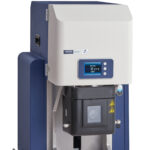Scientists at the US Department of Energy’s Argonne National Laboratory have found a way to use diamonds and graphene to create a new material combination that demonstrates so-called superlubricity.
Led by nanoscientist Ani Sumant of Argonne’s Center for Nanoscale Materials (CNM) and Argonne Distinguished Fellow Ali Erdemir of Argonne’s Energy Systems Division, the Argonne team combined diamond nanoparticles, small patches of graphene, and a diamond-like carbon material to create superlubricity, a highly-desirable property in which friction drops to near zero.
According to Erdemir, as the graphene patches and diamond particles rub up against a large diamond-like carbon surface, the graphene rolls itself around the diamond particle, creating something that looks like a ball bearing on the nanoscopic level.
“The interaction between the graphene and the diamond-like carbon is essential for creating the ‘superlubricity’ effect,” he said in a statement. “The two materials depend on each other.”
By creating the graphene-encapsulated diamond ball bearings, or scrolls, the team found a way to translate the nanoscale superlubricity into a macroscale phenomenon. Because the scrolls change their orientation during the sliding process, enough diamond particles and graphene patches prevent the two surfaces from becoming locked in state. The team used large-scale atomistic computations on the Mira supercomputer at the Argonne Leadership Computing Facility to prove that the effect could be seen not merely at the nanoscale but also at the macroscale.
“A scroll can be manipulated and rotated much more easily than a simple sheet of graphene or graphite,” Berman said.
The team found, however, that superlubricity wasn’t maintained in a humid environment. Because this behaviour was counterintuitive, the team again turned to atomistic calculations. “We observed that the scroll formation was inhibited in the presence of a water layer, therefore causing higher friction,” said Subramanian Sankaranarayanan, a computational nanoscientist at Argonne and co-author of a paper describing the work in Science Express.
While the field of tribology has long been concerned with ways to reduce friction – and therefore the energy demands of different mechanical systems – superlubricity has proved elusive.
“Everyone would dream of being able to achieve superlubricity in a wide range of mechanical systems, but it’s a very difficult goal to achieve,” said Sanket Deshmukh, another CNM postdoctoral researcher on the study.
“The knowledge gained from this study will be crucial in finding ways to reduce friction in everything from engines or turbines to computer hard disks and microelectromechanical systems,” said Sumant.
Photo 1’s caption: nanoscientist Ani Sumant of Argonne’s Center for Nanoscale Materials














